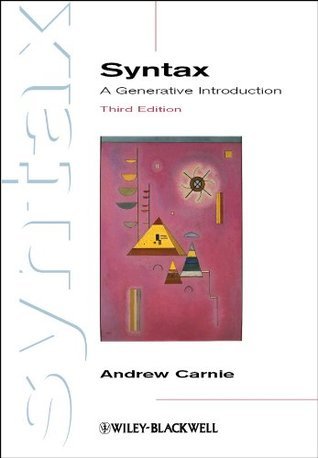What do you think?
Rate this book


544 pages, Kindle Edition
First published December 26, 2002




theoretical syntax is best informed by cross-linguistic research; while at the same time, the accurate documentation of languages requires a sophisticated understanding of grammatical theory.
The first fifteen chapters of this textbook are an introduction to syntactic theory from ... the perspective of the Chomskyan Principles and Parameters (P&P) approach (and its descendant: Minimalism). ... and the 16th we look at two other popular formalisms: Lexical-Functional Grammar (LFG) and Head-Driven Phrase Structure Grammar (HPSG).These three theories belong to the formalist approach to syntax. Carnie says:
"most researchers do their work within only one formalism. But this doesn’t mean that I shouldn’t be familiar with other formalisms too. An important body of work is conducted in these formalisms, and their results are often directly relevant to work being done in Chomskyan P&P syntax. Being able to interpret work done in these alternative approaches is a very useful skill (and unfortunately, one rarely taught to beginning syntacticians [like myself, the reviewer]). The results found in other approaches to syntax have often affected the development of P&P theory."